Marie-Louise d’Orléans, Reine d’Espagne
Marie-Louise was the first-born daughter of Philippe de France and Henriette d’Angleterre. Born on 27 March in 1662 at the Palais-Royal, her mother, disappointed it was not a male heir, apparently welcomed her daughter into the world with the words jeter à la rivière -throw her into the river-.
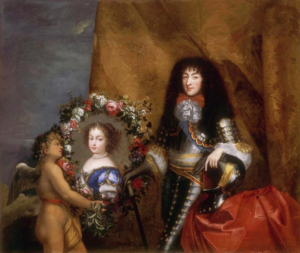
As daughter of the King’s brother and grandchild of a King, Marie-Louise was entitled to the style petite-fille de France as well as Royal Highness. She was commonly referred to as Mademoiselle or Mademoiselle d’Orléans at court. Her parents married in 1661 and by the end of summer that year, as Henriette’s pregnancy was announced, rumours spread the child she was carrying was not fathered by her husband, but by his royal brother. The Sun King and Minette acted very gallant with each other, which led to plenty of tension between the newly weds.
Little Mademoiselle had quite the ancestry. Her great-grandfathers were Henri IV, Philip III of Spain and James I of England. Her grandfathers were Louis XIII and Charles I of England. Her uncles Louis XIV, Charles II of England and the future James II of England. Her great-grandmothers were Marie de Médicis, Margaret of Austria and Anne of Denmark. Her grandmothers were Henriette-Marie de France and Anne d’Autriche. Impeccable.
As first child of the couple, Marie-Louise became the greatest treasure for her father. Contrary to most fathers, Philippe had a big interest in his children and cared dotingly for them, acting father and mother at the same time and spoiling them whenever he could. His little treasure grew up at the Palais-Royal and the chateau de Saint-Cloud, not always in presence of her parents, but entrusted to the skilled hands and minds of governesses. Also her grandmothers, Henriette-Marie de France and Anne d’Autriche spent plenty of time in company of the little girl. Anne d’Autriche adored her granddaughter a lot and wrote in her testament her granddaughter ought to receive the sum of 1,000,000 livres from her private fortune. Originally, Anne wanted her to receive her jewellery collection, worth more than 1,300,000 livres, but Louis XIV wanted parts of the collection for the French Crown Jewels, thus Anne had to change her testament. Leaving the jewels to be divided between her sons and the money for Marie-Louise.
Due to her mother’s frail health, pregnancies always took a toll on her. Minette’s pregnancy with Marie-Louise was a quite difficult one and followed by a miscarriage in 1663. Marie-Louise gained a little brother, Philippe-Charles, in 1664 and lost him in 1666. By that time, her mother had become pregnant again and had given birth to a stillborn daughter on 9 July in 1665. In 1667, Minette gave birth to stillborn male twins and in suffered another miscarriage in 1668. On 27 August in 1669, she gave birth to a healthy daughter, which received the name Anne-Marie.
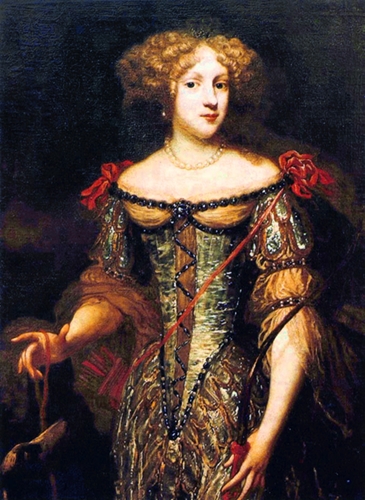
Henriette d’Angleterre died the following year under slightly strange circumstance, which lead to talk she might have been poisoned.… maybe even by her own husband. Philippe was now a widower with two young daughters, Marie-Louise being eight years old and Anne-Marie not even a year old. Since the family had no male heir yet, it was clear that Philippe would have to marry again sooner or later. Louis XIV set out to find a new wife for his brother and found one in Germany. It was Élisabeth-Charlotte du Palatinat, born in 1652 and in her native lands better known as Liselotte von der Pfalz or simply Liselotte.
They married in 1671 and it took a little while until Liselotte and Marie-Louise grew comfortable with each other, but once they were… both became very close. Marie-Louise’s new step mum thought herself still to be too childish, being only ten years older, to act mother to her. Liselotte saw herself more as an older sister to Marie-Louise and they did all the mischief sisters would plot. The second Madame wrote in one of her many letters, how they played or chased each other often and made such a noise during it that others could not endure to stay in the room. She also writes of an old dame, Madame de Fiennes, on whom they played tricks. Madame de Fiennes did not like the sounds of guns being fired, so Marie-Louise and Liselotte threw little firecrackers at the dame’s gown, which she then desperately tried to remove, before chasing both of them through the chateau with the aim to hit them for it. Liselotte writes: “It was the greatest fun!”
As rumours circulated Louis XIV thought about marrying Mademoiselle to Bavaria, Liselotte wrote she would rather keep Mademoiselle here, in France, than see this happening, not only because she is Monsieur’s treasure and deserves only the best, but also because they have grown so close to each other.
But alas, it is the fate of a royal Princesse to be married abroad… and had Liselotte known back then who Marie-Louise would marry, she probably would have been very fond of Bavaria. As the relationship between France and Spain was at a low after the Franco-Dutch war, Louis XIV sought to change that by arranging a marriage to bind the two Kingdoms anew. He himself had married a Spanish Infanta to improve the relationship of Spain and France after the Franco-Spanish War and that turned out quite well. Lacking daughters for a new marriage pact, his eyes turned to his niece, Marie-Louise. She was not at all happy about it… and it is hard to blame her for it.

The Spanish King, Charles II, was the younger half-brother of Louis XIV’s wife Marie-Thérèse and showed signs of Habsburg inbreeding. He was not a looker at all and physically and mentally disabled. He did not learn to talk until he was four, could not walk until he was eight, and was treated like an infant until he was ten. His royal Habsburg lip was so prominent, it caused problems when speaking or eating and made him drool quite a bit. His health was so frail, that he was often on the edge of life and death. He was small, lame, suffered of epilepsy, quite senile and turned bald before he turned thirty-five. (Louis XIV turned bald at around seventeen.) All in all, he was not a Prince Charming one would be eager to marry at first glance.
According to rumours, Marie-Louise was in love with her cousin, the Dauphin, but the talk was later dismissed by Liselotte. Monsieur was rather upset to lose his daughter to Spain, but at the same time also utterly proud at the prospect of seeing her with a sparkling crown on her pretty head. As for Marie-Louise…. she apparently nearly fainted as she saw the first portrait of the intended groom and begged Louis XIV, throwing herself at his feet, to cancel the whole thing. It was in vain.
Louis replied drily, acting as if he thought it to be a joke, that it is not worthy of a Most Catholic Majesty, how the Spanish rulers were addressed, to throw herself at the feet of a Most Christian Majesty, how the French rulers were addressed. In an attempt to soothe the previous words, he added that he could not possibly have arranged a better match than this one, one worthy of his own offspring…. Marie-Louise replied with “Non, mais vous auriez pu pour votre nièce!” I was not only the state of the groom that put her off, but also the very strict Spanish etiquette, which would not leave her with much freedoms. Freedoms she was used to.
In matters of prestige, the match was a fabulous one. The Spanish Crown one of the oldest of Europe. And such a match might open the doors to a Bourbon on the Spanish throne, either by means of an heir or, if none would be born, Marie-Louise could at least turn the Kingdom a bit more French-friendly and recommend a French Bourbon Prince, a son of the Dauphin, as heir.
The marriage was a big thing and the proud papa of the future Queen did his very best to make it a grand affair. Everything was precisely planned and he himself chose the outfits to be worn for his family. (There was quite a fuss about etiquette and precedence, too much to include it here. It might get an own article at some point.) Despite it being one of the greatest court events of Louis’ reign, it was quite the sad affair for Marie-Louise.
The engagement ceremony took place on 30 August in 1679, with the signing of the marriage contract, and the wedding by proxy was celebrated to following day at Fontainebleau. Marie-Louise was elevated to the rank of Queen, a rather unhappy one, and received the usual congratulation visits. Her voyage to her new home began on 20 September. She spent the days in between, the period from 31 August to 20 September, mostly in tears. Even Louis was apparently a little touched by it and urged Philippe to go and console her, to which he replied if he did that now, he would find himself in a similar state. Marie-Louise visited Val-de-Grâce, where the heart of her mother was kept, before here departure and wherever she went in her carriage, the people who witnessed the unhappy Queen whispered that Monsieur, having too good a heart, would surely never let his daughter depart for Spain.
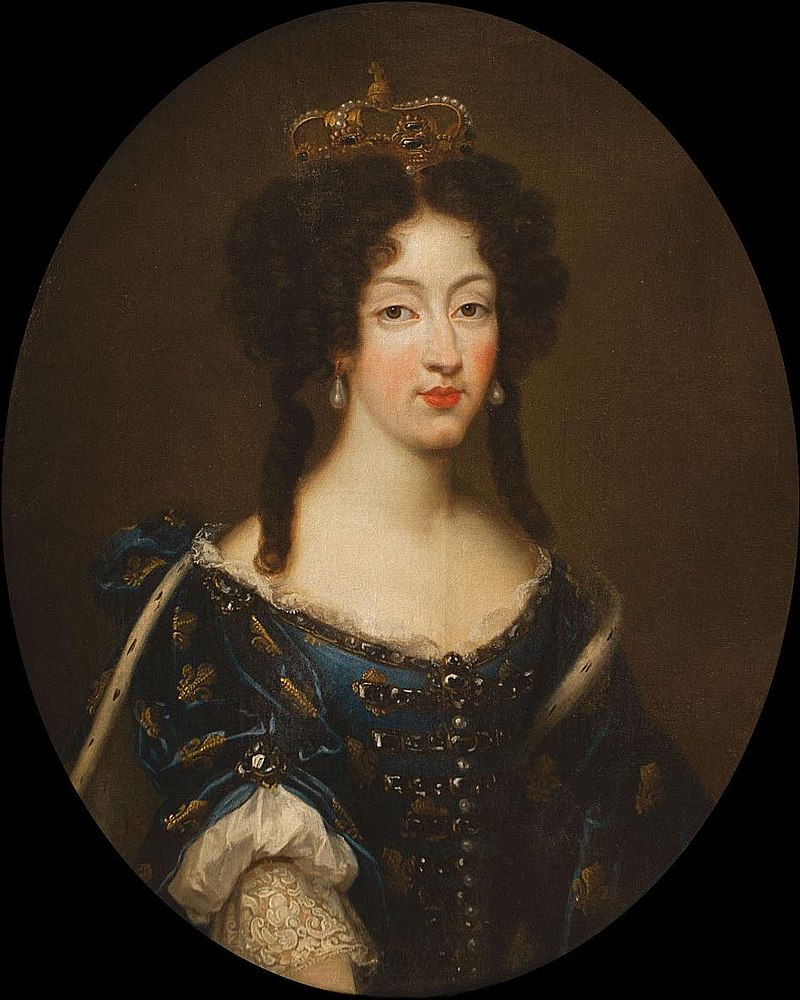 The adieu-ceremony of the court caused another decline of Marie-Louise’ mood. Everyone wept a lot, she the most, everyone was very touched by it all…. apart from Louis XIV, who seeing the tears of his niece and her pain, remarked “Au revoir Madame, et pour toujours….“, a snide-remark directed at her and the also present Grande-Duchesse de Toscane, who left her husband and returned to France,”…the greatest misfortune that could happen would be to see you once more in France.”
The adieu-ceremony of the court caused another decline of Marie-Louise’ mood. Everyone wept a lot, she the most, everyone was very touched by it all…. apart from Louis XIV, who seeing the tears of his niece and her pain, remarked “Au revoir Madame, et pour toujours….“, a snide-remark directed at her and the also present Grande-Duchesse de Toscane, who left her husband and returned to France,”…the greatest misfortune that could happen would be to see you once more in France.”
Monsieur accompanied his daughter a part of the way, so did Liselotte, and both attempted to cheer her and distract her, with not much success. The final goodbye of Marie-Louise and her papa was a heartbreaking scene and caused more tears on both sides. Liselotte promised to write every week, she did so twice a week for the rest of Marie-Louise’s life, and Monsieur promised the same. It did nothing to console her and poor Marie-Louise apparently wept all the way to Madrid.
She met her husband for the first time on 19 November. The very day the couple married on Spanish soil, at Quintanapalla. Charles did not speak French, Marie-Louise did not speak Spanish, thus a translator had to assist. The ceremony had way less opulence compared to the one on French soil and Marie-Louise felt probably utterly lost. The Church joined the celebrations with a Autodafé, during which 20 persons were burned and 60 received corporal punishment as penance for committed sins.
To her great surprise, Marie-Louise found her hubby to be more pleasant that she had expected. He immediately fell in love with her and treated her like a doting husband. He offered to teach her Spanish and she taught him French. He showed her signs of utmost trust and did his best to protect her… she needed that protection, for apart from her hubby, the Spanish court was rather hostile towards her. Mariana of Austria, the mother of the King, did not like her much either in first. Marie-Louise was spared the worst of it, but her pet parrot was strangled. Her French ladies and maids accused of plotting and tortured. There was the constant fear that one day, she might be poisoned or physically attacked. Her relationship to her mother-in-law improved over the years and she also became very affectionate towards her husband, but the general atmosphere remained hostile.
Her life as Queen did not offer much distractions. The Spanish etiquette was very strict and the Queen mostly excluded from most things. Marie-Louise was used to attend the splendid parties of her papa at Saint-Cloud or those of her uncle at Versailles… the Spanish court had nothing even remotely like it. So, the unhappy Queen was more and more secluded, the only friend she had being her husband. He adored her beyond everything else… but both were not able to produce children. It seems likely that the reason for it is Charles condition, but Marie-Louise was the one to be blamed. They tried and prayed. All in vain. Marie-Louise gave up hope, became depressed and terribly homesick. She sought distraction by riding, attended her husband, and eating, the latter making her obese. As she arrived in Spain, she was beautiful and charming… a couple of years later, she had lost her spirit.
Marie-Louise died suddenly, after ten unhappy years in Spain, on 12 February in 1689. After riding out the previous day, she suddenly felt a strong pain in the abdomen. The Queen of Spain was taken to bed and died within the next hours. Only twenty-six years old, like her mother. Her last words were dedicated to her husband: “Your Majesty might have other wives, but no one will ever love you as I do.”

Since her demise was so sudden, rumours of poison began to spread quickly. According to some rumours, Mariana of Austria did it, others said Austria was behind it. Saint-Simon went with the Austria theory, saying Olympe Mancini, who lived at the Spanish court, and the Austrian ambassador murdered Marie-Louise by serving her poisoned milk, because they feared her influence on Charles. Olympe, said to have been involved in the affaire des poisons, then swiftly fled Spain for Germany.
The real reason of Marie-Louise’s death was probably appendicitis, an inflammation of the appendix, or gastroenteritis, an inflammation of the gastrointestinal tract that involves the stomach and small intestine. The latter maybe due to a salmonella infection caused by oysters. Oysters are also mentioned in Liselotte’s correspondence. The second Madame was sure the first Madame had been poisoned and also believed it in case of Marie-Louise, saying that the Queen of Spain was poisoned by being given raw oysters to eat, because she had always been loyal to her native lands.
The news of her death reached France a week later. Monsieur was heartbroken: “Yesterday morning I heard terrible news of the Queen, your sister. I thought I would die, that’s all I’ll tell you. (…) I am more pierced with pain than one can believe. Farewell, my dear daughter, whom I loved with all my heart. (…)” Monsieur to Anne-Marie, 21 February 1689

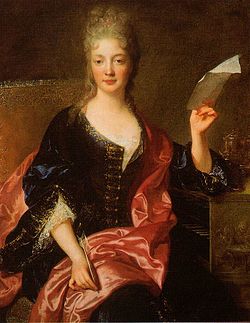
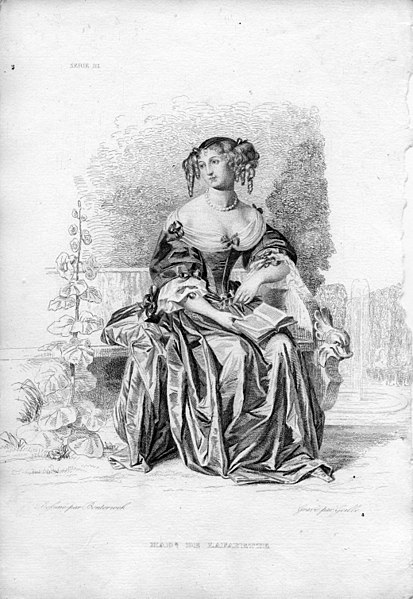
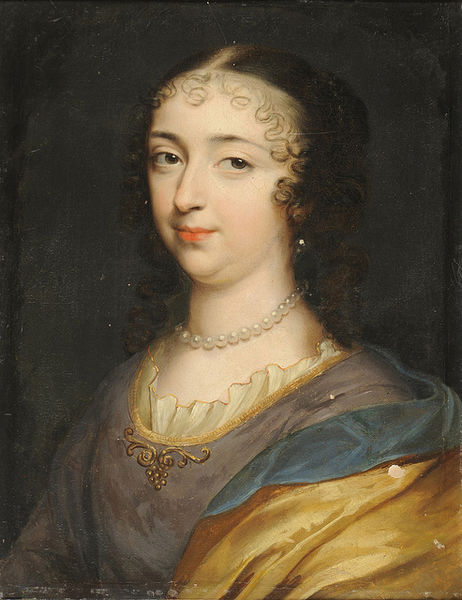
6 Comments
Sam
This is amazing! I am really interested in Marie Louise and this just blew my mind.
I was wondering where you were able to find the letter from Monsieur to Anne Marie after Marie Louise died, since I’ve been trying to find out how he reacted to her death for ages.
Also, what is the source for Phillipe saying that if he comforted Marie Louise he’d end up in the same state, cause that sounds like a very intriguing piece of information.
Sorry if I’ve just inconvenienced you heaps but like I said I’m very interested in Marie Louise and would love to know where I could find those sources.
Thanks!
Aurora von Goeth
You can find the letter, among others, in Elisabetta Lurgo’s Philippe d’Orléans et la Masion de Savoie, which is a collection of letters published this year. As for the comforting, it is mentioned in Nancy Barker’s Brother to the Sun King as well as in Madame sein ist ein ellendes Handwerck by Dirk Van der Cruysse. 🙂
Sam
Thank you so much!
Any ideas as to where I could find Elisabetta Lurgo’s collection of letters? I’ve been looking and can’t find a single copy to purchase. Perhaps it will be some time before it can be bought online? I doubt I’ll be able to find it anywhere else.
Any help would really be appreciated, thanks again!
Aurora von Goeth
She kindly sent me a copy. They are available for purchase, but I think right now only in France and via the publisher, but it should be available on Amazon too at some point.
Sam
Wonderful! Thanks a bunch
elisabetta
Well, I just ended up here in this old thread (collecting on line information about Marie Louise: yes, I’m working on her) and so I can answer you. The collection of letters by Monsieur is available at this link:
https://www.ssha.fr/catalogue/en/ligne
not on Amazon for the moment. But if you are only interested in the letter concerning Marie-Louise, it’s also published in my biography of Monsieur.
The bit about Monsieur not conforting Marie Louise because he was afraid it would move him too much is from “Le Mercure Galant” of september (our august, I don’t remember now) 1679, which you can be find on line. And, rather than a proof of insensibility, as Mme Barker seems to suggest, it demonstrates his fatherly love, so strong that he was afraid that Marie Louise’s weeping could soften him too much.
The letter is truly moving and you can really feel his pain; Monsieur close it abruptly, because “I’m crying so much that I can’t write anymore” and, having seen the original, I can tel it’s written in an evident state of distress.
Interesting summary as always, Aurora.